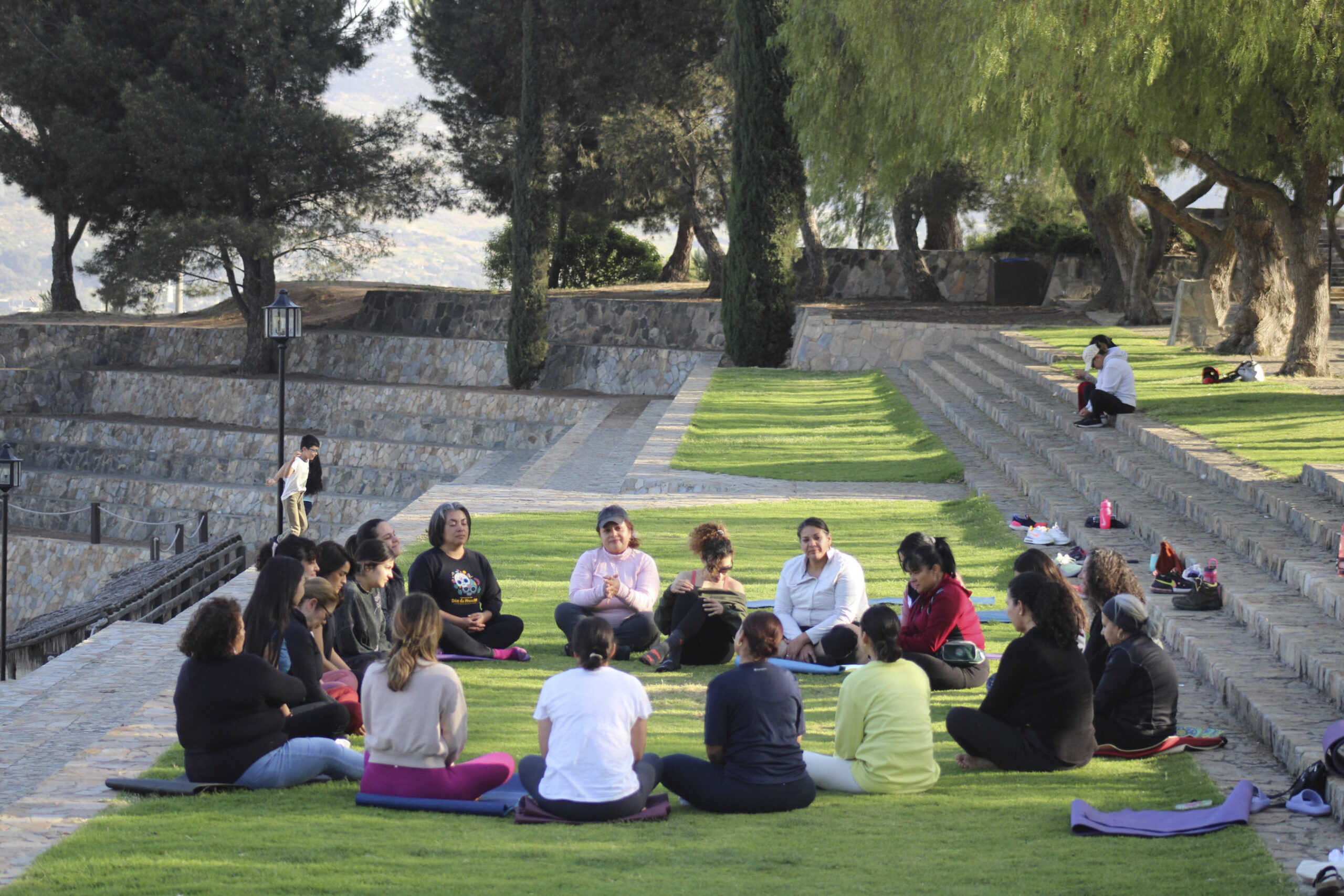Joint Effort

Our co-founder Deborah Szekely says that “movement is life.” Without healthy joints, movement can become restrained, painful, or even impossible. Luckily, there are several strategies that can be utilized to promote positive joint health.
Several guest lecturers have visited Rancho La Puerta over the years to teach guests about how to maintain lubrication and elasticity in their joints. One is Laura Gideon M.S. CPT, CES is an Exercise Physiologist, Certified Corrective Exercise Specialist, Pilates Practitioner, and Workshop Presenter, who lectures Ranch guests about proper postural alignment and methods of achieving myofascial release. Her sessions revolve around fascia, the thin casing of connective tissue that surrounds and holds every organ, blood vessel, bone, nerve fiber, and muscle in place. Fascia contains nerves and tightens when stressed, which causes joint pain. To keep joints healthy, we must treat our fascia right.
Laura shares five things fascia loves and five things fascia hates.
Fascia Loves:
- Hydration
Given that our bodies are 70% water it should be no secret that every part of us relies on proper hydration to function. Water helps keep all the fibers in the fascia apart, so they don’t stick together. Adding Himalayan Sea Salt (available in the Main Lounge and Dining Hall) assists in replenishing electrolytes and keeping us hydrated. - Movement
The Decompress and Motion class at Rancho La Puerta helps decompress joints, improve balance, and gain spinal flexibility. - Touch
Feldenkrais is both a class at The Ranch and a private treatment that helps people explore their bodies’ internal feedback and make natural self-corrections. - Slow stretches
Fascia doesn’t stretch like muscle. It cannot be forced, or it will tear. To stretch gradually, hold gentle stretches for 90 to 120 seconds multiple times a week. - Bouncing
Bouncing boosts the elastic recoil capability of fascia.
Fascia Hates:
- Static positions
Adopting passive positions for extended periods of time causes muscles to stop moving, reducing their ability to keep fascia stretched and vascularly open. Constricted blood circulation reduces the amount of oxygen and nutrients to muscles. - Repetitions (one-sided workouts)
Balance, balance, balance! - Too quick stretches
It takes about 30 seconds of stretching for a muscle to become longer. Fascia works in slower cycles than muscles do. - Too deep stretches
Pushing fascia too far too fast can cause fascia to tear. Ease in slowly into each stretch to allow yourself to assess sensations that arise (sharp pain, shooting pain, numbness, etc.). - Stress
Another reason to add salt! The minerals in salt feed the adrenal glands, which control stress hormones such as cortisol and adrenalin.
Another guest instructor, Nathan Briner, shared this simple posture therapy technique to reset postural alignment, which helps take the pressure off the fascia holding everything together. It’s especially beneficial to those who spend too much time sitting, traveling, or notice their shoulders rolling forward (most of us, I think) because it will help realign the shoulders, chest, and head.


